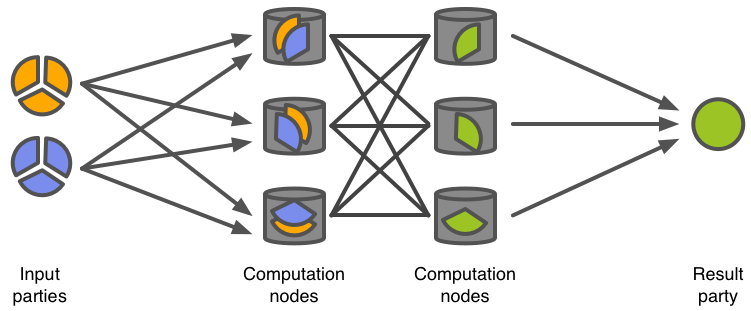Have you ever wondered if there is a possibility to compute the common profits of three people, who do now not favor to tell, how an awful lot they earn? Yes, of course, there is. Maybe it is not so apparent a solution, due to the fact to calculate this average, you need to know a bit of cryptography, but it is possible. This method’s name is multi-party computation and it is very beneficial whilst solving problems, which need a lot of data, however privacy has to be maintained.
What is multi-party computation?
Multi-party computation is a subgroup of cryptography, which helps create methods for solving issues where data should be exchanged, computation must be performed, however without trust in one another. These assumptions are achieved, because the algorithm makes input information break up into pieces and masked. It is only possible, when input data is delivered from more than one source.
How can businesses use it?
It sounds complicated, isn’t it? In this case, let’s take a look at a short example, how multi-party computation can be used in business. Nowadays, every bank analyzes data from transactions within their own IT. However, in the international world frauds are equipped in a lots more tricky way, so that it is tough to predict and prevent them. They are often spread between banks, and that is the cause why they are difficult to detect.
Applying multi-party computation would allow inspecting of transactions in different banks absolutely protecting privacy. That would help to observe complicated frauds, which are spread between banks

Benefits of multi-party computation
You already noticed an example, how can it be used in reality. It suggests how many possibilities this answer opens in front of us. What are the biggest benefits of it?
● Only you see your data – you do not need third-parties anymore, whom you have to trust, because their position is to maintain your records safe. Your information stays with you, is nevertransferred outside your internet firewalls.
● Quantum-safe – In this technological know-how you do no longer have to fear about quantumcomputing anymore. Because it is encrypted in-use, with the aid of breaking up records and distributing it randomly throughout exceptional players, it is safe.
● General Data Protection Regulation conditions are met – the statistics never moves from clients servers, so GDPR necessities about facts privacy are met. The same is with other guidelines (like HIPAA (protecting our private fitness information), GLBA (protecting our economic data) or PCI DSS (covering credit card data)).
● Eliminates tradeoff between usability and privacy – due to the fact all records stays by its owner, there are no obstacles in the use of facts in analysis, you do now not have to mask or drop any features.
As you can see, multi-party computation is an amazing possibility, to protect our data or data of our clients and at the equal time using records ensuing from them. This technological know-how can be used in one of a kind industries, it can help clear up complicated problems like traffic plans in big cities or predict health outcomes, which will end result in higher patient treatment. All of these preserve privacy. Shortly, multi-party computation allows companies to work together, without trusting one another.
